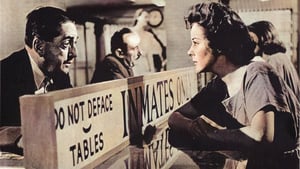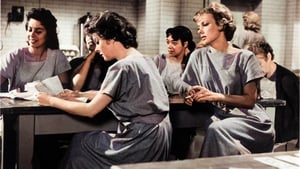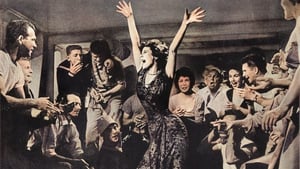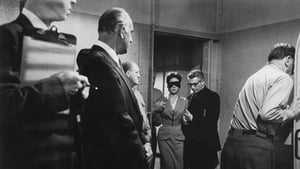Contact: [email protected]
Video Sources 0 Views

Synopsis
[ez-toc]




Introduction
In the vast realm of old movies, where black and white frames encapsulate the bygone era, emerges a cinematic gem that has not only stood the test of time but has undergone a transformation, embracing the vivid hues of modern technology. “I Want to Live Colorized 1958” catapults us back to the late 1950s, providing a gripping narrative that unfolds against the backdrop of the controversial theme of capital punishment. This article embarks on a journey through the making of this cinematic masterpiece, delving into its noir roots, the transformative process of colorization, and the enduring impact it has left on the world of film.
Read Media File Transfer Agreement: Terms and Conditions
Read FAQ
The Making of a Cinematic Masterpiece
“I Want to Live Colorized!” (1958) is a film that etches its name in the annals of cinema, not merely due to its compelling storyline but also owing to the deft hands of director Robert Wise. Wise, a maestro in his own right, took the reins of this project, infusing it with his visionary prowess. The film revolves around the harrowing tale of Barbara Graham, a character brought to life by the phenomenal Susan Hayward.
The brilliance of Wise lies in his ability to weave together the elements of suspense, drama, and a touch of noir aesthetics, creating a cinematic tapestry that leaves an indelible mark on the viewer’s psyche. The choice of Susan Hayward for the role of Barbara Graham is a stroke of casting genius. Hayward’s portrayal is nuanced and captivating, capturing the essence of a complex character embroiled in the throes of a legal battle.
Exploring the Dark World of Film Noir through a New Lens
“I Want to Live Colorized!” emerges as a unique specimen in the cinematic landscape due to its roots in film noir. The film noir genre, characterized by its dark and atmospheric visual style, finds new life in this 1958 adaptation. Wise skillfully adapts traditional film noir elements, infusing them into a biographical neo-noir drama.
The juxtaposition of traditional film noir with the real-life narrative of Barbara Graham adds layers of complexity to the storytelling. The film utilizes shadows, low-key lighting, and morally ambiguous characters typical of the noir genre to amplify the tension and suspense surrounding the protagonist’s fate.
Examining the Controversial Theme of Capital Punishment in “I Want to Live Colorized!”
At the heart of “I Want to Live Colorized!” lies a theme that resonates with ethical dilemmas and societal discourse – capital punishment. The film ventures into the depths of San Quentin State Prison, exposing the grim reality of the gas chamber. The ethical implications of the death penalty are portrayed with stark realism, forcing viewers to confront the moral ambiguity surrounding the practice.
The narrative skillfully navigates the legal intricacies of Barbara Graham’s case, inviting the audience to question the justice system and ponder on the consequences of state-sanctioned execution. The film, even in its original black and white form, serves as a stark commentary on a system grappling with the power to take a life in the name of justice.
The Art and Technique of Colorization in Restoring Old Films
As we traverse the landscape of “I Want to Live Colorized!” in the present day, we encounter a groundbreaking facet that sets it apart – colorization. The art and technique of colorization breathe new life into this old film, transforming it from a monochromatic relic into a vibrant canvas of emotions.
Colorization, once a contentious topic in film preservation circles, has evolved with advanced restoration techniques. “I Want to Live Colorized 1958” stands as a testament to the possibilities of color enhancement. Technological advancements have paved the way for a meticulous process that respects the original aesthetic while infusing it with a spectrum of colors.
However, the debate surrounding colorization remains. Purists argue that tampering with the original black and white palette jeopardizes the authenticity of classic cinema. On the other hand, proponents argue that colorization introduces old films to a new generation, bridging the gap between the past and the present. The pros and cons of color enhancement add a layer of complexity to the cinematic discourse surrounding preservation and artistic enhancement.
The Impact and Legacy of a Colorized Crime Drama
“I Want to Live Colorized!” did not merely capture the attention of audiences; it garnered critical acclaim and accolades. Susan Hayward’s portrayal of Barbara Graham earned her the coveted Academy Award for Best Actress. The film’s success reverberated through the industry, leaving an enduring mark on the landscape of biopics and crime dramas.
The influence of “I Want to Live Colorized!” echoes in subsequent films featuring strong female protagonists and thematic elements rooted in real-life narratives. Its impact on the trajectory of storytelling and aesthetics in cinema is undeniable, paving the way for a new wave of films that delve into the complexities of the human experience.
Authenticity vs. Artistic License: Examining the Colorized Version of “I Want to Live Colorized!”
As we scrutinize the colorized version of “I Want to Live Colorized!,” a pertinent question arises – does the infusion of color enhance or dilute the authenticity of the film? The dark photography and jazz score, hallmarks of the noir genre, take on a new dimension when bathed in color. The vibrant hues bring a sense of immediacy, allowing the audience to experience the narrative in a contemporary light.
The visual and auditory enhancements achieved through colorization contribute to the film’s tone and atmosphere. The chiaroscuro of noir becomes a symphony of colors, creating a visual feast that captivates the senses. The judicious use of color accentuates the emotional beats of the story, intensifying the impact on the viewer.
Bringing Real-Life Characters to Screen: The True Story behind Barbara Graham
“I Want to Live Colorized!” may be a work of fiction rooted in real-life events, but it sparks curiosity about the true story behind Barbara Graham. Distinguishing fact from fiction reveals the tragic life of a woman whose story became a cinematic narrative. The film offers a glimpse into the complexities of Graham’s character, leaving room for exploration into the nuances of her life and crimes.
The portrayal of real-life characters on screen poses a delicate balance between staying true to historical accuracy and crafting a compelling narrative. “I Want to Live Colorized!” navigates this tightrope, inviting viewers to engage with the reality that inspired the fiction.
The Enduring Significance of “I Want to Live!” in Any Format
As we reflect on “I Want to Live!” in the context of similar films like “Smash-Up, the Story of a Woman,” “I’ll Cry Tomorrow,” and “Valley of the Dolls,” a common thread emerges – the resilience of the female protagonist. These films, despite varying in thematic elements, share a focus on the strength and vulnerability of women navigating the challenges of their time.
“I Want to Live!” distinguishes itself by delving into the moral complexities of the legal system, elevating it beyond a mere character study. The enduring significance of the film lies in its ability to provoke thought, stir emotions, and incite discussions on justice, morality, and the human condition.
Embracing the Past while Embracing the Future: Appreciating “I Want to Live!” in Its Original and Colorized Forms
In the final analysis, “I Want to Live Colorized 1958” invites viewers to appreciate its narrative in both its original black and white and colorized forms. The experience transcends the dichotomy of past and future, embracing the essence of storytelling in its myriad forms.
Personally experiencing the film in its different iterations allows for a deeper connection with the characters and the narrative. The monochromatic palette preserves the historical aesthetic, offering a glimpse into the era it encapsulates. On the other hand, colorization breathes new life into the frames, making the film accessible to contemporary audiences while paying homage to its roots.
In conclusion, “I Want to Live!” stands as a testament to the power of storytelling, the resilience of classic cinema, and the transformative potential of technology. The dichotomy of past and future dissolves as we immerse ourselves in the tale of Barbara Graham, embracing the nuances of her life, crimes, and the controversial theme of capital punishment. The colorized version, while stirring debates, opens a dialogue on the intersection between preservation and artistic enhancement, leaving an indelible mark on the ever-evolving landscape of old films.














